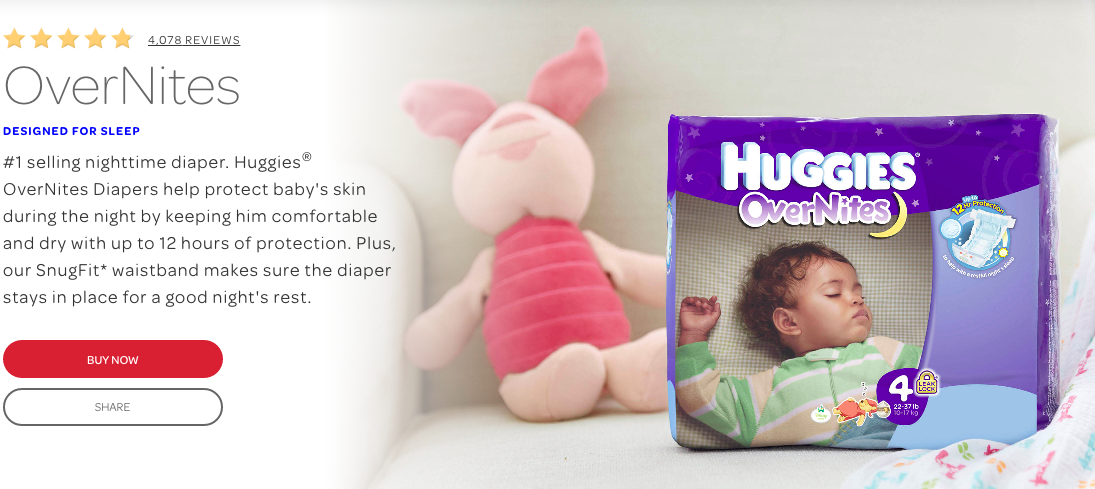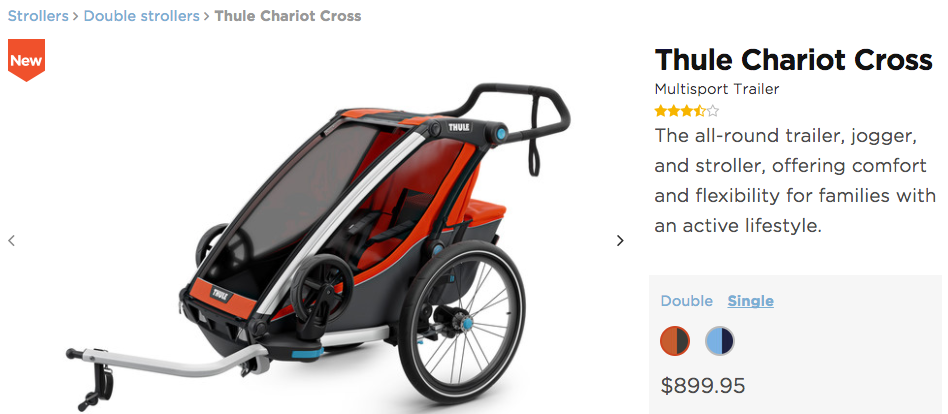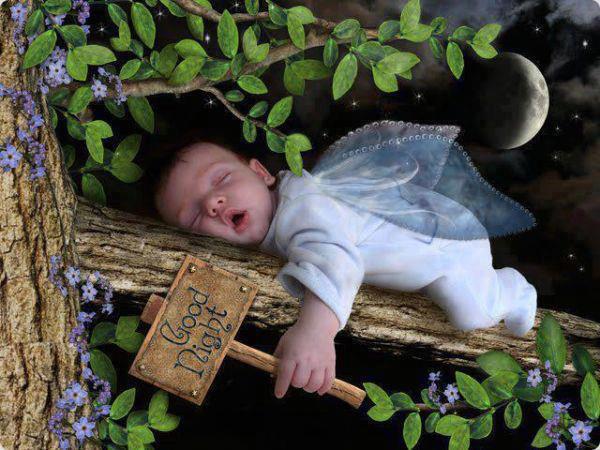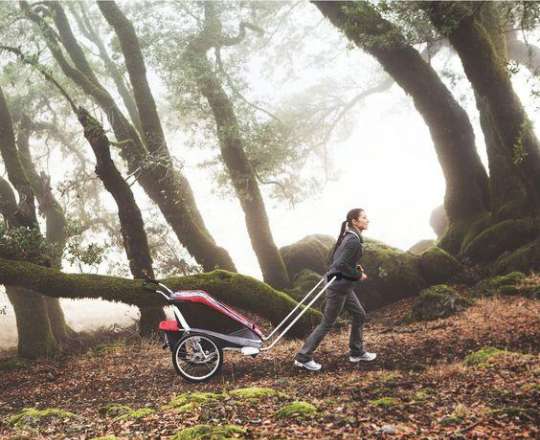A sentence fragment does not a $1200 baby stroller sell
Charla Grenz Solheim
Writer
My husband had exactly one requirement for diapers: disposable. Every other diaper decision was up to me. My product research methods relied on the old-timey “word-of-mouth” or staring at a box until my sleep-deprived brain could extrapolate meaning out of the packaging. There’s a sleeping baby on it, it’s called “Overnites,” and it says something about 12 hours of protection. Sold.
Meanwhile, back at the prenatal shopping frenzy, my husband was on the hunt for a stroller. While some people may know Jonah Hill’s favorite color or Bernie Sanders’ voting record, my husband can explain why a car’s timing chain is better than a belt or the Japanese word for natural wear on vintage Levi’s. He’s a researcher. It’s his thing.
I *may* have said to my husband that I might like to jog with our hatchling. Did I jog without a stroller? Nope. I mean what else was I going to do with all that maternity leave free time? (Snort.)
Which led him to the *drumroll* Thule Chariot. A modern marvel of stroller engineering, the Chariot was not just a baby carriage. The accessory options were staggering. A special infant harness. A waterproof, clear cover. Cup holders. Conversion kits for biking, hiking, strolling, jogging, and (wait for it)…skiing. I still do not have the fortitude to do the math on what all of those things add up to, but thanks to my full-price-phobic husband, I never had to.
For funsies, let’s compare product descriptions for these two items.


REALLY, Thule?? A sentence fragment to sell me on an $899.95 stroller?*
Advantage: Huggies.
* Full disclosure: there are bullet points with more info. However, you have to scroll to find them, and they’re below two “Add to cart” buttons. They also leave out key elements like the fact that the price you see is for a base model. In order to do all the activities (hike, ski, jog), you have to buy additional components.
There’s no there there
I have some bad news, e-tailers. Global cart abandonment rates went up in Q4 2016 by 2.4%. A whopping 76.8% abandon their online goods.
Many brands pour money into improving forms and checkout processes, and those things are important. But what reason do shoppers give for getting cold feet?
According to a study by the e-commerce analytics site Connexity, “For those aged 18-35, the main reason for abandonment is said to be high cost. However, the biggest reason cited overall is a lack of reassurance that the product will meet the consumer’s needs.”
In other words, people show up to research your product, but if they don’t find the information they need to give them confidence in their purchasing decision — the higher the price, the more reassurance needed — they’re going to hold off on that final click.
Your product copy needs to do the job of the salesperson or trusted expert friend who seems to intuit the questions shoppers have before they even ask. Are they the type to geek out on thermodynamic ink or do they just want to buy a pack of pencils and go? Your sales depend on figuring this out.
Goldilocks would love this product copy
So, what did Thule get wrong? They fell back on a lazy phone-it-in writing philosophy that says product copy should be “short and snappy.” But should all of it be that way? I don’t need to know the design inspiration behind paper napkins, for example. But my marathon runner friend could probably write the book on shoe technology.
The moral of this story? Sometimes less really is more. But people like my husband are going to have to do some digging to get to the critical information he wants before he buys.
Write the copy that convinces your reader they’ve found the product they want. Not too long, not too short, just right.
THE BASIC
Let’s be real. No one needs to read a novella about white socks or paper clips to be convinced to buy. There’s only so much to say, so keep your product description focused on the facts and what people care most about. How is it different, better, or similar to things the person already likes or owns? This is the writing equivalent of checking off boxes.
Cotton tee:
- What is it made of?
- What is the cut?
- How does it fit?
- What does that graphic say or look like?
THE SPECIFIC
These items are designed for a purpose and require a little more explanation than the replacement products above. People shopping for these things are in the market and looking for something particular like a hybrid car or the best shoes for point guards. They care about whether or not your product will solve their problems and is inspired by the right trend, look, or technology they’ve heard about. Your copy needs to show credibility.
Professional cookware:
- How does it work?
- Does it look how I want it to?
- Will it do what I need it to?
- Is it designed for a certain type of cooking?
- How long will it last?
THE FUTURISTIC
Snowflakes, unicorns, and these products. The never-been-done-befores. The rare, innovative and unusual. Your product descriptions should tell a tale about the why but not the what. Who designed it? Who uses/wears it? What’s the inspiration behind it? What do people need to know that they wouldn’t know by looking at it? Share the story behind the product. It’s not about the material, function, or style, but the status gained by owning it.
Fashion designer sneakers:
- Who designed this shoe and what are they known for?
- What was their vision for this design?
- Is there anyone famous associated with this product?
- Is it a limited edition?
Life, liberty, and the pursuit of shopping happiness
I needed to know approximately two things when looking for diapers. I didn’t need to research the intricacies of diaper technology to shell out $25 for a product that was going to end up in an overpriced diaper pail. But that un-ironically named Chariot took a lot more review-reading, video-watching, and spousal-sighing to convince us it was The One.
Because products are not all created equal, your copy shouldn’t be either.

1,104 hours of this for $24.29? Worth. Every. Cent.

For a mere $299.95 extra, you, too, can be a draft horse.
Charla Grenz Solheim | Website
